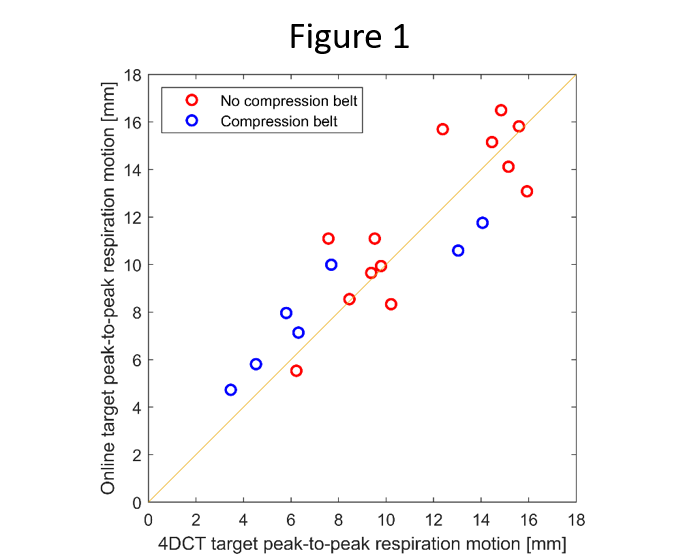The dosimetric impact of motion during ungated MR guided SBRT of adrenal gland metastases is limited
PD-0237
Abstract
The dosimetric impact of motion during ungated MR guided SBRT of adrenal gland metastases is limited
Authors: Uffe Bernchou1, Signe Winther Hasler1, Faisal Mahmood1, Anders Bertelsen1, Tine Schytte1, Carsten Brink1
1Odense University Hospital, Department of Oncology, Odense, Denmark
Show Affiliations
Hide Affiliations
Purpose or Objective
Online MR guided radiotherapy of abdominal and
thoracic targets could potentially benefit from the use of respiratory beam
gating. The purpose of the current clinical study was to investigate the
dosimetric consequences of target motion during adaptive SBRT of adrenal gland
metastases treated on an MR linac without beam gating options.
Material and Methods
The study is comprised of 21 patients with adrenal
gland metastases treated to 45 Gy in 3 fractions (n=8), 50 Gy in 5 fractions
(n=11), or 60 Gy in 8 fractions (n=2) on a 1.5 T MR linac. Dose planning aimed
to achieve a conformal and inhomogeneous dose distribution, which maximises the
GTV V95% and mean dose, covers the PTV with 67% of the prescribed
dose while respecting hard OAR constraints for stomach, intestines, great
vessels, and kidneys. The size of the PTV margins was based on the peak-to-peak
respiration motion of the target assessed on pre-treatment 4DCT. Each treatment
fraction included a 3D T2w MR image, used for plan adaptation, and alternating
sagittal and coronal 2D BFFE cine MR images at 5 Hz for motion monitoring during
beam-on. Patients were treated while breathing freely, however, for 7 patients is
was attempted to reduce the respiration induced target motion by use of an
abdominal compression belt. The time-resolved position of the target during
radiotherapy was determined using rigid registration between the online 2D cine
images and the daily 3D planning MR images. The delivered GTV dose was
estimated from the daily planned dose that was rigidly shifted and accumulated
according to the time-resolved target position changes due to drift and
respiration motion.
Results
The 4DCT peak-to-peak respiration motion assessed
prior to treatment correlated with the target peak-to-peak respiration motion
measured during treatment (R=0.80, p<0.01 – see fig. 1). The respiration
motion was significantly lower in patients treated with a compression belt (Mann–Whitney
U test, p=0.03). The population mean DVH curves for the planned and delivered
GTV dose is shown in figure 2A. The curves differ in regions above V85%,
with a slightly lower delivered dose than the planned dose. The difference in V95%
is shown in figure 2B as a function of the respiration motion amplitude. Reductions
in V95% due to target motion was below 2% for the majority of the patients,
while larger reductions were seen in patients with larger respiration motion.


Conclusion
Dose coverage degradation due to target motion
during beam delivery is generally small in patients with adrenal gland
metastases treated on an MR linac without gating options, but more noticeable degradation
may be observed in patients with larger respiratory motion. The pre-treatment
target respiration motion observed using 4DCT is conserved during treatment and
is therefore valid for PTV margin estimation. The respiratory motion is reduced
in patients treated with a compression belt; thus, the belt is a valid
alternative to avoid the prolonged treatment time needed for gated treatments.